By now, you’ve likely heard that scientists have found a potential sign of biological life on Venus. Through a series of radio telescope observations in 2017 and 2019, they were able to confirm the presence of phosphine gas high in the planet’s thick atmosphere. Here on Earth, the only way this gas is produced outside of the laboratory is through microbial processes. The fact that it’s detectable at such high concentrations in the Venusian atmosphere means we either don’t know as much as we thought we did about phosphine, or more tantalizingly, that the spark of life has been found on our nearest planetary neighbor.
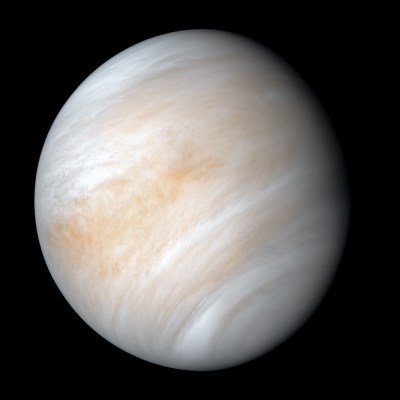
To many, the idea that life could survive on Venus is difficult to imagine. While it’s technically the planet most like Earth in terms of size, mass, composition, and proximity to the Sun, the surface of this rocky world is absolutely hellish; with a runaway greenhouse effect producing temperatures in excess of 460 C (840 F). Life, at least as we currently know it, would find no safe haven on the surface of Venus. Even the Soviet Venera landers, sent to the planet in the 1980s, were unable to survive the intense heat and pressure for more than a few hours.
While the surface may largely be outside of our reach, the planet’s exceptionally dense atmosphere is another story entirely. At an altitude of approximately 50 kilometers, conditions inside the Venusian atmosphere are far more forgiving. The atmospheric pressure at this altitude is almost identical to surface-level pressures on Earth, and the average temperature is cool enough that liquid water can form. While the chemical composition of the atmosphere is not breathable by Earthly standards, and the clouds of sulfuric acid aren’t particularly welcoming, it’s certainly not out of the realm of possibility that simple organisms could thrive in this CO2-rich environment. If there really is life on Venus, many speculate it will be found hiding in this relatively benign microcosm high in the clouds.
In short, all the pieces seem to be falling into place. Observations confirm a telltale marker of biological life is in the upper levels of the Venusian atmosphere, and we know from previous studies that this region is arguably one of the most Earth-like environments in the solar system. It’s still far too early to claim we’ve discovered extraterrestrial life, but it’s not hard to see why people are getting so excited.
But this isn’t the first time scientists have turned their gaze towards Earth’s twin. In fact, had things gone differently, NASA might have sent a crew out to Venus after the Apollo program had completed its survey of the Moon. If that mission had launched back in the 1970s, it could have fundamentally reshaped our understanding of the planet; and perhaps even our understanding of humanity’s place in the cosmos.
Just Passing Through
The Apollo program was fantastically expensive, and many believed it would be a waste to simply abandon all that equipment and collected knowledge once the primary mission had been completed. So even before the 1969 Moon landing, NASA had started studying potential future uses for the hardware as part of what they called the Apollo Applications Program. The greatest success of this program was SkyLab, but there were other fascinating ideas proposed that unfortunately never left the drawing board.
Certainly the most outlandish of which was the proposed 1973 Venus flyby mission. Using an Apollo Command and Service Module (CSM) that had been specially modified for long duration spaceflight, and a “wet workshop” crew compartment made out of a spent Saturn V upper stage, three astronauts would have embarked on a year-long journey to our nearest planetary neighbor.
After the Saturn V upper stage had put the vehicle into orbit, the Apollo CSM would have detached and rotated 180 degrees to dock with a pressurized storage compartment that had been installed in place of the Lunar Module. The upper stage’s J-2 engine would then be used to perform the trans-Venus injection burn, and afterword, any remaining propellant would have been vented into space. On the journey away from Earth, astronauts would have moved the tightly packed equipment and supplies from the storage area into the now empty propellant tanks through a special hatch installed at the top. With the J-2 engine now inoperable, the redundant twin engines of the proposed Block IV CSM would be used to perform any course corrections as well as the braking burn when the vehicle returned to Earth.
There would have been no way to slow down at Venus after the four month interplanetary flight. Instead, the vehicle would have made a partial orbit of the planet at an altitude of approximately 5,000 kilometers (3,000 miles) before being slung back towards home. This would have only given the crew a few crucial hours to make their observations and deploy sensing equipment, but it was believed their close proximity to the planet would allow them to do more useful science in that short amount of time than could be accomplished remotely with the technology of the era.
Exploring the Clouds
While the human occupants of this makeshift interplanetary ship wouldn’t have stayed for long, it was expected they would drop off a few robotic probes that would descend into the planet’s atmosphere. These probes would have continued operating for a few days after the initial flyby and communicated directly with the retreating crewed spacecraft. This would have allowed them to pack smaller and less powerful radio transmitters than would otherwise have been required to send their findings directly back to Earth, increasing not only their useful payload capacity but the amount of time they could have operated before their batteries were depleted.
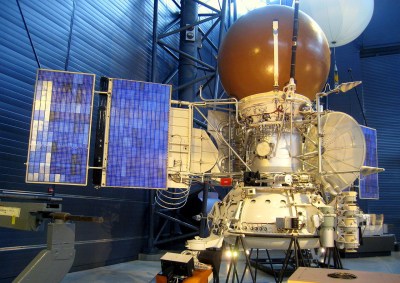
While we can only speculate as to what form these probes would have taken, it’s a safe bet that at least some would have been similar to the balloons carried on the Soviet Vega missions in 1985. Filled with helium and treated with chemicals to help resist the corrosive properties of the Venusian clouds, these probes were designed to reach equilibrium and remain within the 50 km temperate zone to collect as much data as possible before their batteries ran down. The Vega balloons proved to be highly successful, though they only carried rudimentary instrumentation.
Had NASA gone ahead with regular Apollo-Venus missions, these floating probes would likely have become more advanced as technology improved and scientists learned more about the planet. We now know that the lower atmosphere is so thick that probes and spacecraft can easily be floated within this temperate zone. Robotic vehicles, and perhaps eventually even crewed ones, could be designed to “splashdown” in the atmosphere rather than pass through it.
Venusian Airships
Despite the inhospitable surface, there are several compelling reasons to mount crewed expeditions to Venus. For one, it’s the second closest destination in the solar system after the Moon. With transit times as short as four months, a round-trip mission is well within the established limits of human endurance in space. From orbit, humans can conduct more detailed and varied observations and experiments than what’s possible with remotely operated vehicles alone.
But humans are explorers by nature, and eventually astronauts will want to descend into the planet’s atmosphere themselves. In that case, they would experience gravity 90% of what they’re used to on Earth; close enough that muscular and skeletal degradation will no longer be a concern. It’s also notable that the breathable mixture of nitrogen and oxygen that human explorers would need to bring along with them would function as buoyant gas in the planet’s 96.5% CO2 atmosphere, allowing for the possibility of crewed Venusian dirigibles.
The idea of sending crewed inflatable vehicles, and even building a permanent outpost in the clouds, was explored by NASA as recently as 2015. Called the High Altitude Venus Operational Concept (HAVOC), this study proposed a spacecraft architecture that could safely insert human crews into the temperate layers of the Venusian atmosphere, allow them to work there for extended periods of time, and then return them to orbit with an air-launched rocket. Outwardly these craft, some as large as 129 meters in length, would closely resemble large rigid airships of the early 20th century such as the USS Shenandoah and the Hindenburg.
The Next Steps
As exciting as the prospect of a human “Cloud City” on Venus might be, it’ll probably never happen. If recent history is any indication, securing the long-term political backing necessary to fund an undertaking of this magnitude would be all but impossible. It was hard enough getting American astronauts back into orbit on domestic spacecraft, and the agency’s elaborate plans for a return to the Moon seem perpetually years down the road.
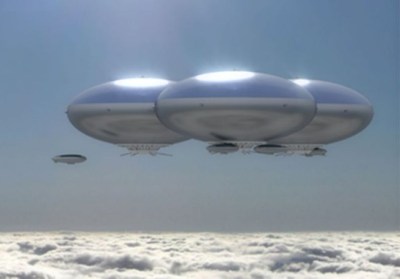
Sending a crewed mission into orbit around Venus would be considerably easier and cheaper than establishing an outpost, but it’s still far more likely that the most direct consequence to finding phosphine gas in the planet’s atmosphere is a push for a new generation of robotic missions. Technology has improved dramatically, and building a floating atmospheric probe designed to seek out signs of biological life is no longer the insurmountable challenge it was in the 1970s.
Indeed, the wheels are already in motion. Rocket Lab CEO Peter Beck has already announced his company plans on launching a small probe towards Venus as soon as 2023 that will be designed to dive into the planet’s atmosphere and search for signs of microbial life. The probe will be tiny, owing to the relatively meager payload capacity of the Electron rocket, but it’s a start. Hopefully larger and more elaborate spacecraft won’t be far behind.
While we’ll never see an astronaut take their one small step on the rocky surface of Venus, it’s still a planet that clearly deserves a closer look. Confirming the existence of extraterrestrial life would be one of the greatest scientific discoveries of all time, doubly so if it ends up being on a world so much like our own. Studying the hearty lifeforms that make Venus their home would be as near as we’ll ever get to directly observing Earth’s distant past. Or, if we’re not careful, Earth’s distant future.


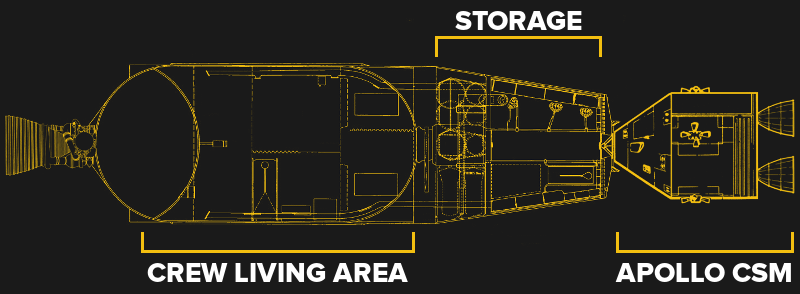
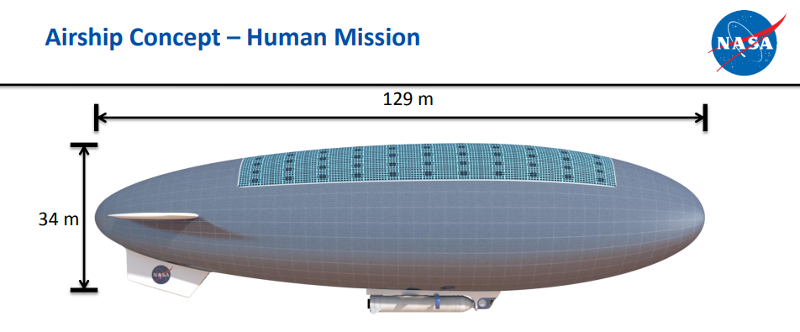














Dirigibles. Victorian steampunk comes to Venus.
Even better, since our breathable atmosphere is a good lifting gas on Venus. Which I think was mentioned in the article, but my head is so foggy right now so I’m gonna be redundant, apologies.
No need for ultra-rare gasses that have such light atoms that they teleport right through membranes. And it gives a way more efficient internal volume, since the habitat and the lifting structure are the same continuous cavity. And the pressure gradient would be far lower than we’re used to for lifting gas structures elsewhere, so leaks would operate mostly by slow diffusion and be easy to monitor and correct instead of rapidly becoming a catastrophe that kills everybody. Think more like keeping a bouncy castle inflated instead of a balloon instantly popping.
Venus is strangely one of the most (if not the most period) compatible environments for humans outside of Earth. Just have to be high above the ground. It’s super improbable as the article says, but so is all manned space exploration. That was JFK’s lesson: we can’t be motivated by what’s probable or pragmatic. Nothing really is in space, but we do it because it is hard. And holy hell, manned exploration produces so much more than unmanned science gathering. It just does. And even super small-scale colonization is worth more still.
Unmanned is great to have as an augmentation for manned exploration, but it is kind of a dead end if we let it totally replace it. In my humblest opinion. All the really good spin-offs and lateral developments that come with spaceflight and make it one of the greatest returns in human history? It’s almost all from manned stuff. That just seems to be the way it is. If we ever get technology to truly help repair our biosphere, it will likely come from efforts to make a large-scale biosphere in space. That research would be utterly priceless. It might just save us all from impending doom, and that’s honestly not much hyperbole.
Almost any campaign would turn out to be worthwhile. People often have this strange misconception that space exploration is prohibitively expensive; it does indeed have enormous buy-in costs, but it’s not really an expense. It’s an investment. A very good one.
Just think of all the payoffs from the computers on the Apollo rockets alone. Easily trillions of dollars worth of innovation over the following several decades. And that’s just a single aspect of the moonshot, and obviously an even smaller aspect of manned flight in general. Lots of people apparently think that the moonshot was this kind of inspiring but ultimately pointless PR gimmick or perhaps a pissing contest with the Soviets, but believe me: your world would be so much different without it.
One might point out that it was never intended to produce those developments on the side, but that’s the real beauty of it. Manned spaceflight helps us find futures we never even conceived of. How handy is that?
But ironically the solid-state computer that was developed largely thanks to the space program rapidly killed manned space infrastructure. That was kind of inevitable, I guess. Ever seen the diagrams for manned weather stations that were designed in the 50s back before they had good enough computers to obviate the need for on-site technicians? That’s where we got the general concept of the 2001: A Space Odyssey orbital stations. We had plans to build massive weather observation satellites regardless of whether we got miniaturized control systems—even if they had to be powered by vacuum tubes and guys in starfleet uniforms. How incredibly gutsy is that?
Would have been an interesting era if we took a bit longer to discover semiconductors and stuff. If we delayed by fifteen or twenty years, we might have gotten a good bit of momentum on long-term human presence in space far above the (unfortunately mostly symbolic) presence in LEO, e.g. the ISS.
The biggest problem with Venus colonization is that it’s difficult to obtain hydrogen. Without hydrogen you can’t make water, you can’t make propellant to return home, you can’t make plastic for balloon envelopes, etc. And while there is sulfuric acid and water vapor in the atmosphere, concentration is on the order of 10s of ppm. This is less concentrated than CO2 is in earth’s atmosphere. Extracting hydrogen from these low concentrations will be difficult.
Humans on site dramatically speed up the process of sample gathering and other research. Apollo 17’s crew drove their rover over 24 miles total in three trips out and back, over the course of three days.
The Mars rover Opportunity made it about 28 miles, in 14 years.
Even with stops to conduct as many tests as Opportunity did, that’d be about a week’s worth of work, perhaps less, for humans driving a rover.
A human can stand in one spot, turn 360 degrees, and spot as much stuff to examine in a minute as a remote rover could in a year. The human could examine all of it in a few days work while the remote rover operators would have to choose a small number of things, take lots of pictures, plot out safe driving paths, then upload the commands and wait for the rover to very slowly roll over to each place.
Most expensive Big Trak ever. ;) Somewhat more sophisticated though…
Without humans on the Moon, especially with Apollo 17, many of the most interesting and unusual samples would have been missed. They could have a look with HD Resolution Eyeball Mark 1 while cameras, even the best ones currently active on any probe, lander, or rover, aren’t that good.
I misread the title as, “Exploding The Clouds Of Venus” and frankly, that would have been a way cooler article. :)
Please wait while spaceship is beeing uploaded to the cloud…
One reason it’s so hard to get Venus missions funded is that the missions which have the most scientific merit don’t actually last that long. Venusian airships are sexy, but just chucking some instruments on a parachute gives you more bang per your buck. Yes, this has been done before, but it’s been 35 years since our last Venus mission, our instruments have improved since then. One advantage of skydiving instruments is that you can investigate the lower atmosphere where things get hot and weird too!
Venus’ lower atmosphere is not a gas, it’s hot supercritical CO2. Supercritical meaning it’s between a gas and a liquid. Supercritical fluids can have interesting chemistry, so it is important to investigate this region to determine if the chemistry there is responsible for the phospine.
Also, because there’s a potential for life in the upper atmosphere, the blimp concept is now more expensive, because the whole blimp must meet planetary protection requirements. A parachute probe which does not spend particularly long in the upper atmosphere has less stringent requirements…
Anyway the DAVINCI+ mission: https://en.wikipedia.org/wiki/DAVINCI is probably the best proposed upcoming mission to investigate the phosphine further.
Supercritical fluids are also almost impossibly corrosive, so that’s probably one of the several reasons that anything we put on Venus’ surface almost instantly bricks. It’s insanely impressive that the Soviets got some photos out of that one lander at all.
http://www.projectrho.com/public_html/rocket/celss.php#recycle
Different supercritical fluid, but using water in that phase has been proposed as a way to almost perfectly recycle waste materials in a space habitat. It rips just about anything into atoms. Needless to say, it’s sure gonna suck if your Venus sky city has a problem and forces you to land. You’d probably prefer to blast up into orbit instead or transfer to some kind of backup aerostat or whatever you’d call this crazy vehicle, but that would be a pretty difficult evacuation. But there’s gotta be some plan for the eventuality that everyone ends up falling to the surface trapped in a deflated overgrown bouncy castle.
Bit of good news—the outside of the habitat isn’t survivable for humans, but not because of a pressure differential. Certainly you’d have a lot better chances than doing an EVA from a spacecraft in orbit (assuming you had something to keep you from falling). People forced outside the hab wouldn’t need anything nearly so involved as a space suit. An oxygen mask and some eye protection would probably be enough for a quick stint. All stuff you could very quickly pull over your head in a hurry.
Soviets had several landers that sent pictures from Venus.
https://en.wikipedia.org/wiki/Venera
Also, I think the blimp thing is for a different mission profile in general than more unmanned scientific probes. That could certainly be done better with a parachute and some kind of ceramic-coated hull, but I think the blimps are more for a manned concept. You really don’t want to put a parachute on a person and jump down to the surface :)
You’d need an Orion drive or something like that to get out of that awful atmosphere as well. It’s so damn hard to launch from Venus. Certainly would be a lot more feasible if you could start out above the densest part of that mess.
There is actually a true steampunk thing bring designed for Venus as we speak- a rover designed almost entirely as a mechanical, spring powered contraption.
The design is fairly well advanced at the point, there was a detailed article on the mechanics of it in my trade magazine as a member of the American Watchmakers-Clockmakers Institute, the AWCI’s trade magazine, the Horological Times. I’d upload a scan but have no image hosting.
I can’t find any details on the design online yet surprisingly, but NASA gave good access to the HT for an article describing the mechanics and the escapement mechanism that meets out motive power.
This link to a talk about the design is all I have, but the video of the talk was lost by accident. https://hs-ny.org/meetings/2019/12/9/exploring-the-surface-of-venus-with-a-clockwork-rover-by-evan-hilgemann
It’s basically a large spring powered wagon, really only powered for maybe 30 minute ride on Venus after touching down.
If there is life on Venus (Hey David Bowie I need a song here!) I wonder if it’s Panspermia, Ancient survivors of a more primitive (and hospitable) biosphere or just survivors from natural Terrestrial polution?
The new Venusian rover is being designed in part by Mattel. The rover’s name ??? Hot Wheels ☺️
What an obscene waste of money such a mission would be. What is the total cost? Imagine if that was spent as grants for setting up makerspaces. Which would have the greatest long term social and economic ROI? Even science would probably be better served by making STEM more accessible via more makerspaces.
Extremely obtuse comment. First off, the amount of financing in those two frameworks would be orders of magnitude different, so you can’t just compare them and say “I will put this money on y rather than x!”.
And if anything, money should be spent on space AND makerspaces… but in case there was just not enough of it, it would make much more sense to reboot space exploration in view of new exciting discoveries, rather than making an unordinate number of makerspaces, hoping to get NASA scientists out of them magically.
Also it’s not the sheer number of spaces that make the difference, but strategically choosing the location… it’s pointless to have 20 of them concentrated in the same big city and not anymore for a 100 km radius, just as it’s pointless to put one in each coal town you can imagine. STEM is now already more accessible than ever, and I’m willing to bet makerspaces had a quite limited impact on its rise, especially when considering places like e.g. most of Europe, or 3rd world countries, that do not have the availability of makerspaces that USA do.
Moreover, space travel has inspired generations to come and is still doing it – do you really think planting moar 3d printers to produce moar shitty baby yoda replicas, or teaching everybody to just use 3rd party libraries for everything Arduino will have the same effect?
Last but not least, stop forcing STEM down people’s throat… jobs market are oversaturated and lately they crashed due to the beervirus, why do individuals like you continue to ask for “moar STEM pupils”?
“Last but not least, stop forcing STEM down people’s throat… jobs market are oversaturated and lately they crashed due to the beervirus, why do individuals like you continue to ask for “moar STEM pupils”?”
Forcing people to learn the basics. Yeah I can see why it crashed.
https://www.britannica.com/topic/STEM-education
I personally fail to see what does the linked article has to do anything with the discussion.
Also “social sciences” belong to STEM? And how do “”racial and gender gaps”” play into the inability of employers in finding qualified workers??
There is life on Earth around the deep ocean vents where at some places the pressure is higher than on the surface of Venus and the temperature is only about 60F below the highest surface temp known on Venus.
Pressure sure, but there’s no life on Earth that survives anything even close to Venus surface temperatures.
The water may be coming out of deep sea vents at Venus-like temps, but the creatures living down there aren’t just sitting there getting blasted by the flow 24/7. They live in the area around the vent, not inside it.
Known limit for thermophiles is around 120 C.
https://en.wikipedia.org/wiki/Hyperthermophile
Venera images:
http://mentallandscape.com/C_CatalogVenus.htm
https://web.archive.org/web/20151114164157/http://www.strykfoto.org/venera.htm
Somehow I always imagined the super-thick atmosphere to look, well, thick.
This looks like you could just take a stroll around the hot rocks in a supercritical CO2 atmosphere that eats up any lander within 30 min. Oh wait…
There is life on Venus…. except weekdays when the bars close early…😄 ( Paraphrased….Mork and Mindy….Robin Williams)
https://www.space.com/venus-calypso-surface-survey-idea.html
Calypso?
I thought that was an ocean exploration vessel!
B^)